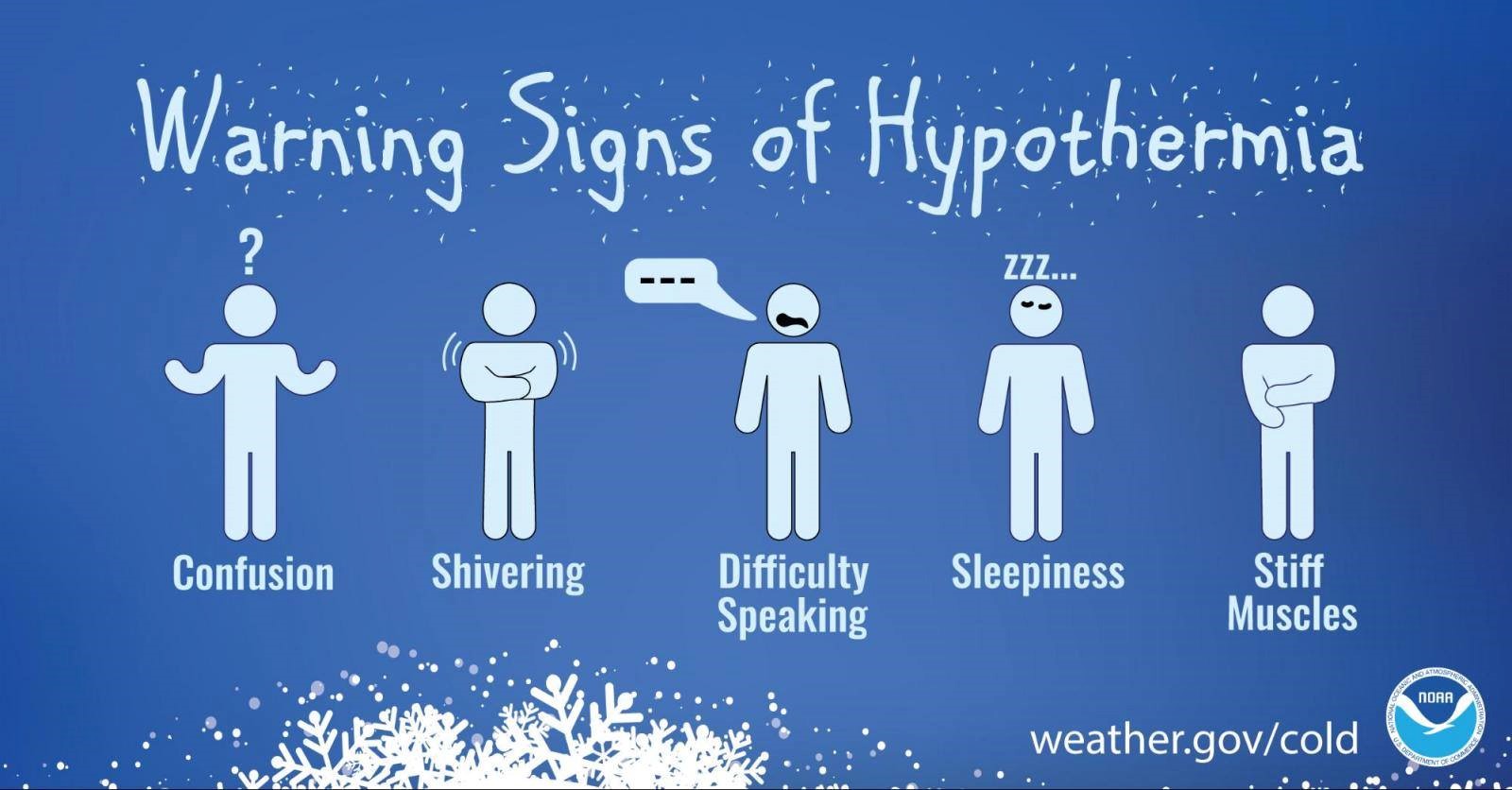Tips on how to prevent hypothermia, frostbite
With temperatures plunging through next week, here are some tips on how to prevent frostbite and hypothermia.
The following tips should not be substituted for medical attention. Frostbite and hypothermia are conditions which should be evaluated by a medical professional.
According to the Centers for Disease Control and Prevention (CDC), long periods of exposure to the cold can cause major health issues with frostbite and hypothermia being the most common during frigid temperatures.
Hypothermia
When a subject is exposed to dangerous cold conditions the body temperature can become low enough to affect the brain, making it hard to act, move or think.
Whose at risk?
- Babies sleeping in cold areas.
- People who venture out into the cold for long periods i.e hikers, hunters, and the homeless.
- Drug users or people who drink alcohol.
- The elderly.
Signs of hypothermia
Infants:
- Cold, bright red skin
- Low energy
Adults:
- Memory loss
- Shivering
- Exhaustion
- Slurred speech
What to do
- Take a person’s temperature and seek medical attention if body temperature is below 95 degrees.
- Get the subject to a warm room or shelter.
- Remove any wet clothing.
- Warm the center of the body first then head, neck, chest, groin.
- Warm beverages can aid in increasing body temperature.
- Get medical attention as soon as possible.
Frostbite
According to the CDC, frostbite is caused by injury to the body resulting in a loss of color and feeling in affected areas.
Whose at risk
- Those with poor circulation.
- Those who spend long periods in the cold.
- Those who are not dressed appropriately for cold weather.
Frostbite signs
- Numbness
- A white or grayish-yellow appearance to the skin.
- Waxy or firm feeling skin
What to do
- Seek medical care for frostbite and hypothermia immediately.
- Get to a warm area.
- Do not use frostbitten feet or hands as this can increase damage.
- Immerse affected areas of skin in warm, not hot water.
- Do not massage the affected area.
- Do not use a heating pad, heating lamp, or heat of stove for warming as affected areas are numb and can be burned easily.
- Do not substitute these rules of thumb for medical care.
Be prepared
- Prepare your car and home in case of winter emergencies.
- Have an extra set of dry and warm clothes available.
- Cover nose, ears, chin, fingers and cheeks.
- Have at least a half tank of gas.
- Have a contingency plan.
The CDC has provide the following infographic:


